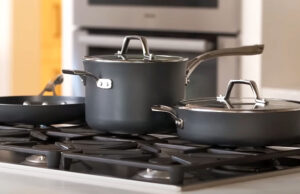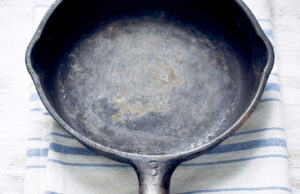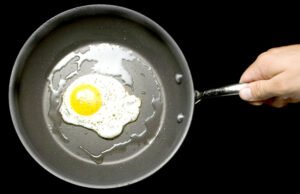As an Amazon Associate, I earn from qualifying purchases at no extra cost to you.
Whirlpool Dishwasher Cycles Explained: Expert Guide
You finally got a Whirlpool dishwasher, but now you’re confused by all the buttons and cycles. Don’t worry, you’re not alone. I was in the same situation when I first used mine. The cycles may look confusing, but each one has a purpose. You just need to know when to use which. In this article, you’ll learn exactly what each Whirlpool dishwasher cycle does, when to use it, and how to get the best results without guessing. This guide will help you wash dishes like a pro with zero stress.
Normal Cycle Explained in a Simple Way
The Normal cycle on a Whirlpool dishwasher is the most used cycle by many people. It is made for everyday dishes that are not too dirty but still need a good clean.
If you eat dinner and just place your plates, cups, and silverware into the dishwasher right after, this is the best cycle for you. It uses the right amount of water and heat to remove food and grease from your dishes.
This cycle usually takes around 2 to 3 hours. It might sound like a long time, but most of it is not just cleaning. There are stages like pre-rinse, wash, rinse, and drying. The dishwasher also pauses sometimes to heat the water or wait for the next step. That’s why it may seem like it’s doing nothing for a few minutes.
Whirlpool’s Normal cycle uses sensors to check how dirty the dishes are. If your dishes are only lightly dirty, the dishwasher might use less water and finish sooner. If they’re more dirty, it may take more time and more heat. This smart system is helpful because it saves water and energy.
You don’t need to scrub the dishes much before putting them in. Just remove big food pieces, and let the Normal cycle do the rest. It’s not made for burnt pans or very greasy pots, but it works perfectly for day-to-day dishwashing.
Also, this cycle usually ends with heated drying, so your dishes come out dry and ready to put away. If your dishwasher has the option for “heated dry,” it is good to turn that on with this cycle.
- Best for daily dishwashing
- Good for plates, cups, bowls, and forks
- Saves water with built-in sensors
- Takes about 2 to 3 hours
- Uses heat to dry dishes
Heavy Duty Cycle for Big Messes
The Heavy Duty cycle is your best friend when you have dishes with hard food stuck on them. Imagine you cooked a big meal with baked cheese or fried food. Those greasy pans and crusty casserole dishes need more power. That’s when the Heavy Duty cycle helps you.
This cycle uses more water, higher pressure, and hotter temperatures than the Normal cycle. It’s built to clean dishes that are really messy or oily. It can clean off dried pasta sauce, baked-on food, or even egg residue that’s hard to remove.
You don’t have to soak the dishes before loading. Just scrape off big food bits, and place them properly so the spray arms can reach everything. Try not to overload the racks, so each dish gets clean.
This cycle can take 3 to 4 hours, depending on how dirty the load is. It takes more time because the dishwasher needs to break down the thick grime. It may also pause to heat the water higher. Whirlpool machines do this for better results.
You can also use a special dishwasher detergent made for tough messes. It helps improve the cleaning even more. Some people also use a rinse aid to stop spots and make the dishes shine.
After the wash, the heated dry option will dry your heavy dishes, including thick pans. Some Whirlpool dishwashers also have a “sanitize” setting you can turn on during the Heavy Duty cycle. It helps kill more germs.
- Great for pots, pans, and baked dishes
- Uses more water and hotter heat
- Takes 3 to 4 hours
- Can include sanitize option
- Best for greasy, crusty, or stuck-on food
Quick Wash Cycle When You’re in a Hurry
The Quick Wash cycle is perfect when you don’t have time to wait and your dishes are just lightly dirty. Maybe you had breakfast and want clean plates fast. Or maybe guests are coming soon, and you need clean dishes right away. This is when Quick Wash becomes super helpful.
This cycle is fast. Most Whirlpool models finish it in about 30 minutes to 1 hour. That’s much faster than the Normal or Heavy Duty cycles. But remember, it is only for dishes that are not very dirty. If you used a pan to cook bacon, this cycle won’t clean it fully.
Quick Wash uses more water pressure and sometimes higher heat in a short time. That’s how it gets the job done fast. But it doesn’t always dry the dishes completely, so you may need to towel dry them after or leave them open to air dry.
It’s best to rinse off your dishes before loading them for this cycle. That way, food won’t get stuck. You can also place fewer items in the dishwasher for better results.
This cycle is great for daily use when you’re short on time. It saves water and energy, and your dishes are still clean. You just need to make sure they’re not very greasy or full of stuck-on food.
Some Whirlpool dishwashers also allow you to combine Quick Wash with a heated dry option. That makes it more effective, especially if you’re using it before a dinner party or event.
- Takes 30 minutes to 1 hour
- Best for lightly dirty dishes
- Good for breakfast or snack cleanup
- Saves time and energy
- May need to towel dry after
Sensor Wash Cycle for Smart Cleaning
The Sensor Wash cycle is very smart. It uses built-in sensors to find out how dirty the dishes are and then decides the time, water, and heat needed. It’s great if you’re not sure which cycle to pick. Just load your dishwasher and press Sensor Wash. The machine does the thinking.
This cycle is great because it works for most dish types, whether they are lightly or heavily dirty. The dishwasher checks the water at the start and during the cycle. If it sees the water is dirty, it keeps washing longer. If the water is clean, it finishes sooner.
The time for this cycle changes each time. It can be anywhere from 1.5 hours to over 3 hours. It all depends on what kind of dishes you have inside. It might seem random, but it’s really just being smart with cleaning.
Sensor Wash also saves energy and water. Since it only uses what is needed, you’re not wasting anything. That’s why many people use this as their main cycle. It works well, even if you have mixed dishes like cups, plates, and pots in one load.
You don’t need to pre-rinse the dishes. Just remove big leftovers, and let the sensors take care of it. It’s also helpful if you’re not sure whether to choose Normal or Heavy.
If your Whirlpool dishwasher has a sanitize or heat dry button, you can still use them with this cycle. It will improve the final result even more.
- Uses sensors to choose time and water
- Great for any type of load
- Saves water and energy
- Time changes based on dish dirt level
- Works without guessing the cycle
Soak & Clean for Sticky and Dried Food
The Soak & Clean cycle is made for dishes that have dried-on food stuck to them. Think of oatmeal bowls left overnight or lasagna pans that sat in the sink too long. This cycle helps soak and loosen that dried food first before washing.
It starts with a longer soak time. The dishwasher sprays water over the dishes gently for a while. This softens the food, just like soaking in a sink. After that, the regular wash starts. This makes it very effective on sticky messes.
This cycle can take longer than others, usually between 3 to 4.5 hours. It needs that time to break down all the dried food. If your dishwasher also has a “high temp” option, it’s good to turn that on during this cycle.
You can skip hand soaking your dishes in the sink when using this. Just scrape off the big stuff, load it, and start the cycle. It does the soaking and cleaning in one go.
It’s perfect for when you don’t want to deal with smelly old dishes. And it’s good if you often forget to rinse right after eating. This cycle works great on old cereal bowls, baking trays, and dried rice pots.
- Soaks and washes in one cycle
- Best for dried-on and sticky food
- Saves time from hand soaking
- Uses gentle soak followed by strong wash
- Takes 3 to 4.5 hours
Rinse Only Cycle for Holding Dirty Dishes
Sometimes you’re not ready to run a full load, but you don’t want your dirty dishes to get smelly. That’s when the Rinse Only cycle is helpful. It’s a short cycle that just rinses your dishes with water. No detergent needed.
This cycle takes only about 10 to 15 minutes. It sprays water to remove leftover food and keeps the dishes from drying with sticky messes. It doesn’t clean them fully, but it keeps them from smelling until you run a full cycle later.
You can use this when your dishwasher is half-full, and you plan to add more dishes later. Instead of leaving dirty plates in the sink or dishwasher all day, just use this cycle.
It’s also useful if you’re waiting for guests and don’t want bad smells in your kitchen. Some Whirlpool dishwashers let you use this cycle with a sanitize option, but that’s not common.
You don’t need soap, just water. And you don’t need to scrape the dishes much. It’s also a good way to test the dishwasher if you’re not ready to run a full wash.
- Takes only 10 to 15 minutes
- Great for holding dirty dishes
- Stops smells and food drying
- Uses no soap
- Good between meals or during parties
Final Thoughts
Whirlpool dishwasher cycles may look confusing at first, but they are made to help in different situations. Once you understand each one, it becomes super easy to pick the best cycle for your dishes. You don’t need to guess or waste time soaking pans in the sink. With this guide, you can feel confident about using every button on your Whirlpool dishwasher.
| Cycle Name | Time Needed | Best For | Uses Heat | Needs Detergent | Water Use | Drying |
|---|---|---|---|---|---|---|
| Normal | 2 to 3 hours | Everyday dirty dishes | Yes | Yes | Medium | Yes |
| Heavy Duty | 3 to 4 hours | Greasy pots and baked food | Yes | Yes | High | Yes |
| Quick Wash | 30 min to 1 hour | Light dirty dishes, fast results | Sometimes | Yes | Low | No |
| Sensor Wash | 1.5 to 3+ hours | Any type, smart auto clean | Yes | Yes | Smart use | Yes |
| Soak & Clean | 3 to 4.5 hours | Dried and stuck-on food | Yes | Yes | High | Yes |
| Rinse Only | 10 to 15 minutes | Rinsing without cleaning | No | No | Very low | No |
Frequently Asked Questions (FAQs)
Is it okay to use the Normal cycle every day?
Yes, the Normal cycle is made for everyday dishwashing. If your dishes are not too greasy or baked on, it works very well. You don’t need to scrub your plates before placing them inside. The dishwasher is built to clean regular food messes like pasta, rice, sauces, and crumbs. It also uses water and heat in a smart way so you save energy and still get clean dishes. It’s safe to use it daily.
Can I use Quick Wash for greasy dishes?
Quick Wash is not the best for greasy or heavily dirty dishes. It is designed for lightly used dishes like a breakfast plate or a glass of juice. Grease needs more heat and time to break down, and Quick Wash is too short for that. If you try to clean greasy pans with Quick Wash, they might still feel oily after the cycle ends. For better results, use the Heavy Duty cycle or add a high-temp wash option.
Do I need to rinse dishes before using Sensor Wash?
No, you don’t need to rinse your dishes before using Sensor Wash. The whole point of this cycle is to check how dirty your dishes are and adjust the wash. Just remove large food chunks, like bones or peels, and load your dishes. The sensors inside the dishwasher test the water to decide how long and how hard to wash. It saves water and still gives very clean results, even if the dishes are messy.
Can Rinse Only stop bad smells?
Yes, the Rinse Only cycle is made to keep your dishwasher and dishes from smelling. If you leave dirty dishes for a long time, they can start to smell bad. The Rinse Only cycle sprays water over them and removes loose food. It only takes about 10 to 15 minutes. It’s great when you want to wait until the dishwasher is full before running a full wash. This cycle is also good between big meals or during a party.
Is it safe to use Soak & Clean every time?
You can use the Soak & Clean cycle often, but it’s not needed every time. This cycle takes longer and uses more water. It’s best for very dried or stuck-on food, like cereal bowls or baked lasagna trays. If your dishes are only a little dirty, using this cycle every time will waste time and energy. For regular use, try Normal or Sensor Wash, and save Soak & Clean for the tough messes.
Do I need special soap for Heavy Duty?
You don’t need special soap, but using a strong dishwasher detergent helps the Heavy Duty cycle work better. There are some detergents made for pots and pans that fight grease more strongly. These can give better results when you’re cleaning oily or sticky cookware. You can also add rinse aid to help stop spots and improve drying. While regular detergent works fine, tougher messes clean better with the right soap.
Can I open the door during a cycle?
Yes, you can open the door during a cycle, but be careful. When you open the dishwasher mid-cycle, the hot steam and water might come out. Most Whirlpool dishwashers will pause the cycle if you open the door. You can check or add a dish, then close it again to let it continue. Just don’t keep it open too long, or the cycle might restart. Always close the door tightly before continuing the cycle.
Do I need to use heated dry?
Heated dry is not required, but it helps a lot if you want your dishes dry right away. Without it, your dishes might come out wet or have little water spots. If you don’t mind drying with a towel or letting them air dry, you can turn it off to save energy. But for shiny, ready-to-store dishes, heated dry is a great option. It’s also helpful in winter when dishes dry more slowly by air.




